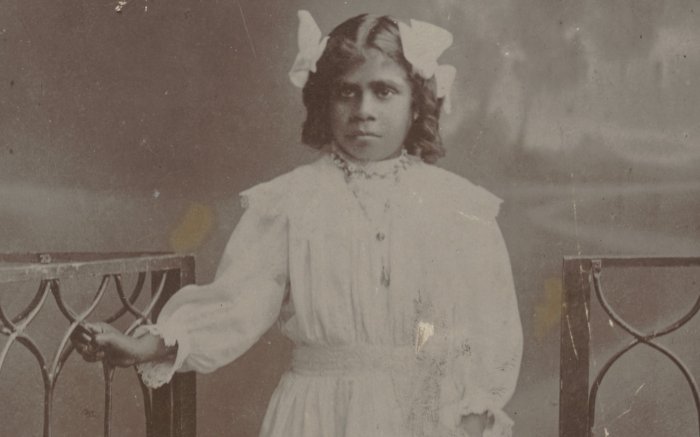- Australian Aboriginal Prophecies. Prophecies handed down from generation to generation of the Australian aboriginal Elders speak of the coming of the end times of one dimension as we enter another. One of the prophecies from the Australian Aboriginals has to do with 'black rain' falling at the end time.
- Three days earlier. For any of the deaths. But amid growing demands for police accountability and an end to Aboriginal people dying in custody, a judge decided on Oct. 26 that the officer who.
- Aboriginal End Of Days Around The World
- Aboriginal People
- Aboriginal End Of Days Sylvia Browne
- Aboriginal End Of Days Of
This review discusses palliative care and end-of-life models of care for Aboriginal people in the Australian state New South Wales, and considers Aboriginal palliative care needs by reflecting on. A corroboree is a generic name for an Aboriginal dance ritual, often involving costumes and music. The term was first used by British colonisers, who mangled the original Indigenous word ‘caribberie’, and is now used in the Australian vernacular to refer to any large gathering of people.
Aboriginal legends about comets and tsunami are ubiquitous throughout Australia (Peck 1938;Parker 1978; Johnson 1998). In the interior of New South Wales, the Paakantji tribe, near Wilcannia on the Darling River, tell a story about the sky falling (Jones & Donaldson 1989). A great thunderous ball of fire descended from the sky scattering molten rock of many colours. Unprecedented floods that forced people to flee to the tops of hills to escape drowning followed within a couple of days. Even though flooding fits within a scenario for a nearby comet impact into the ocean, such a story probably is modern and has incorporated elements of an older Aboriginal Dreamtime legend of the Flood. In South Australia, another legend tells of stars falling to Earth to make the circular lagoons fringing the coast.
Aboriginal End Of Days Around The World
Perhaps the most intriguing legend along the SE Coast of Australia is the story of the eastern sky falling quoted above (Peck 1938). It has several variants (Peck 1938; Massola 1968; Willey 1979; Johnson 1998).
Aborigines in eastern Australia believed that the sky was held up on supports at the edges of the earth, and that the eastern prop either collapsed or was rotting. Tribes far into the interior of the continent were requested to send tribute to the east to be given to the spirit people in charge of holding up the sky so that it could be repaired. Possum rugs and stone axes were sent eastwards in response. Historians interpret the story as referring to the beginning of European colonization from the east; however, one version, quoted above (Peck 1938), is particular to the South Coast of New South Wales and may be describing the way tsunami affected the coast.
The legend implies that the ocean fell from the sky. Substantial evidence exists for Aboriginal occupation of the open rocky headlands along this coast (Hughes & Sullivan 1974). At Bombo Headland 70 km south of Sydney, tsunami overwashed a 40 m high headland. The wave separated from the headland and plunged back to the ocean surface 100–200 m into a bay on the lee side. Profuse amounts of coarse sediment dropped from the airborne flow into the bay under gravity (Fig. 2). Evidence of disturbed Aboriginal occupation ‘silcrete hand axes and shaped blades’ has been found on the lee side of headlands along this coast (Bryant 2001). Aborigines at these locations initially would have heard, but not seen, the tsunami approaching. Their first indication of disaster would have been when they looked up and saw the ocean dropping on them from the sky as the tsunami wave surged over headlands.
Additional physical and legendary evidence of major comet and tsunami impacts exists in SE Australia. In South Australia, the legend of Ngurunderi clearly alludes to tsunami (Flood 1995, p. 140–141). Ngurunderi was a great Ancestral figure of the southern tribes in South Australia, who established Tribal Laws.
Long ago, Ngurunderi’s two wives ran away from him, and he was forced to follow them. He pursued them. . . and went along the beach to Cape Jervis. When he arrived there, he saw his wives wading half-way across the shallow channel which divided Nar-oong-owie from the mainland. He was determined to punish his wives, and angrily ordered the water to rise up and drown them. With a terrific rush, the waters roared and the women were carried back towards the mainland. Although they tried frantically to swim against the tidal wave, they were powerless to do so and were drowned. Their bodies turned to stone and are seen as two rocks off the coast of Cape Jervis, called the Pages or the Two Sisters.
Nar-oong-owie refers to Kangaroo Island, South Australia. The history of Aboriginal occupation of Kangaroo Island remains enigmatic. The island shows extensive evidence of Aboriginal occupancy; but, when the first European, Matthew Flinders, landed on the island in 1802, it was unoccupied. Mainland Aborigines call Kangaroo Island, Kanga—the Island of the Dead. The coastline also evinces signatures of cosmogenic tsunami. Most significant are enormous whirlpools (features that have been linked to catastrophic flow under tsunami (Bryant 2001)) on the northern coast of the island, where the Aboriginal legend is set. In addition, there are vortex-carved caves and massive piles of imbricated boulders, some over four metres in diameter, near promontories. Other tsunami and comet legends that could relate to the Mahuika Comet occur along the eastern coast of Australia. On the north coast of New South Wales, Aborigines speak of ‘the moon setting in the east’ and of flooding of rivers such as the Namoi from the ocean on a clear day. A spear from the sky fell into the sea followed by a great flood that changed the coastline (Cahir 2002).
Individual large boulders on rock platforms are also identified as representing particular Aborigines struck down by a large wave. In SE Queensland, the Glasshouse Mountains, which lie at the western side of the coastal plain 20 km from the ocean, represent ancestral forms of Tibrogargan and his family. Tibrogargan one day was alarmed to see a great rising of the ocean and fled inland with this family. Individual peaks in the Glasshouse Mountains represent his family still gazing seaward at the threat. The family is estranged because Tibrogargan’s son, Coonowrin, abandoned his mother, Beerwah, in the flight. Tibrogargan has turned his back on him and has vowed never to look on him again.
** put in link to comet Mega Tsunami’s tag **
Australian Aboriginal Prophecies
Prophecies handed down from generation to generation of the Australian aboriginal Elders speak of the coming of the end times of one dimension as we enter another. One of the prophecies from the Australian Aboriginals has to do with 'black rain' falling at the end time.
Msr card reader writer program.
Guboo Ted Thomas, Australian Aboriginal Tribal Elder
I was in dreamtime.I seen this great wave going. I tell people about this wave. It wasn't a tidal wave.This was a spiritual wave. So, to me, I believe that the Dreamtime is going to be that.
Aboriginal People
I believe the revival is going to start in Australia when we're Dreaming. It's the humming bee that I'm talking about. And love.We've got to learn to love one another.
You see, that's really what's going to happen to the earth. We're going to have tidal waves. We're going to have earthquakes.

That's coming because we don't consider this land as our Mother. We've taken away the balance, and we're not putting it back.

Aboriginal End Of Days Sylvia Browne
NEW ZEALAND 7 1/2 phere full movie, online.
PROPHETS AND PROPHECIES INDEX
CREATION
ALPHABETICAL INDEX OF ALL FILES
Who can view private videos on youtube.
CRYSTALINKS HOME PAGE
PSYCHIC READING WITH ELLIE
2012 THE ALCHEMY OF TIME
Aboriginal End Of Days Of

